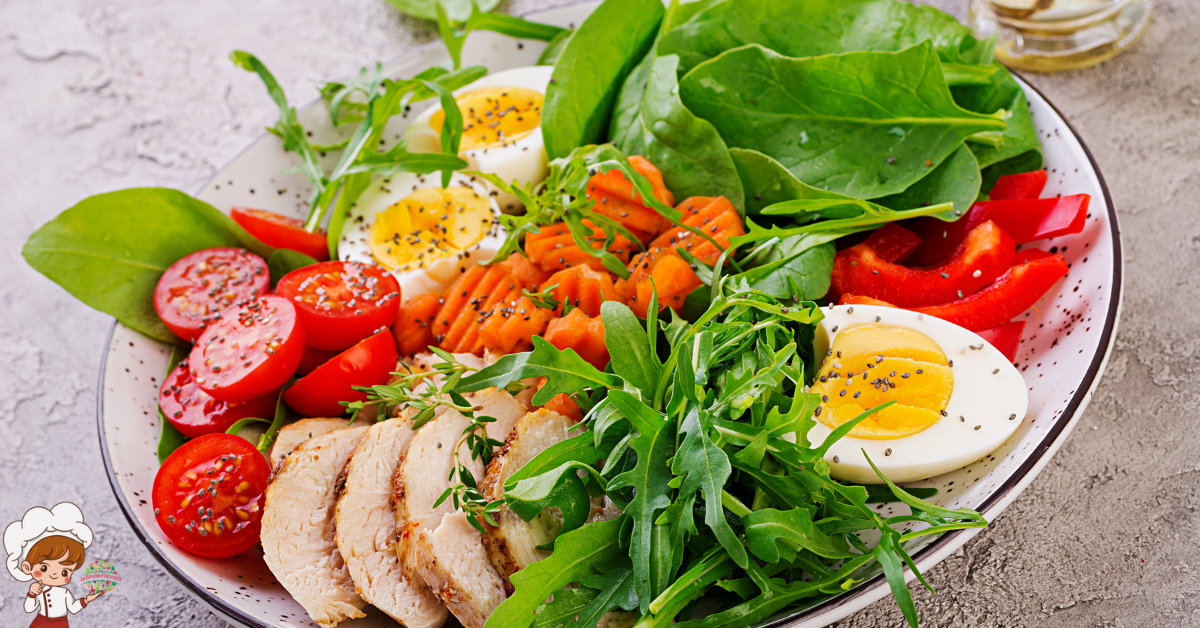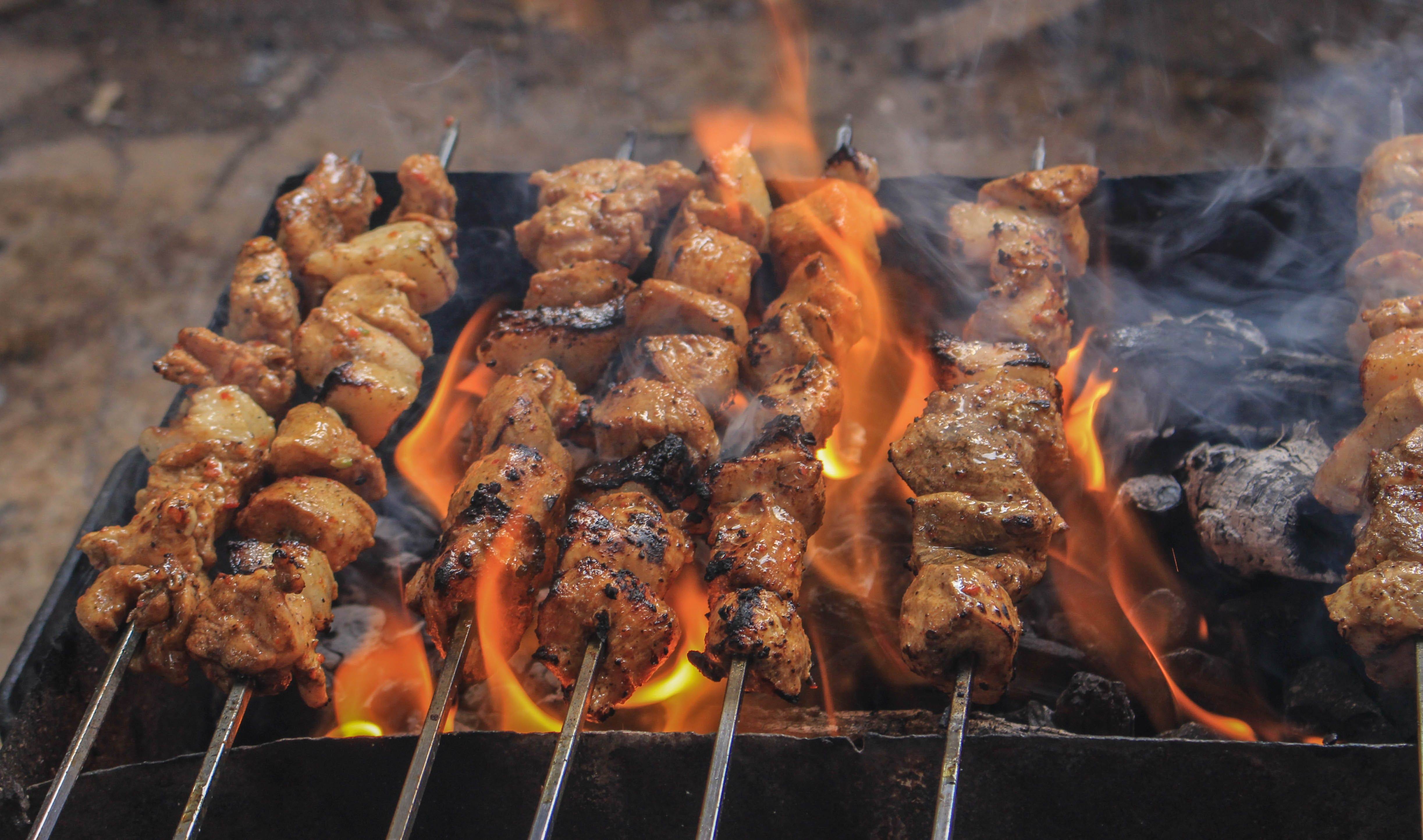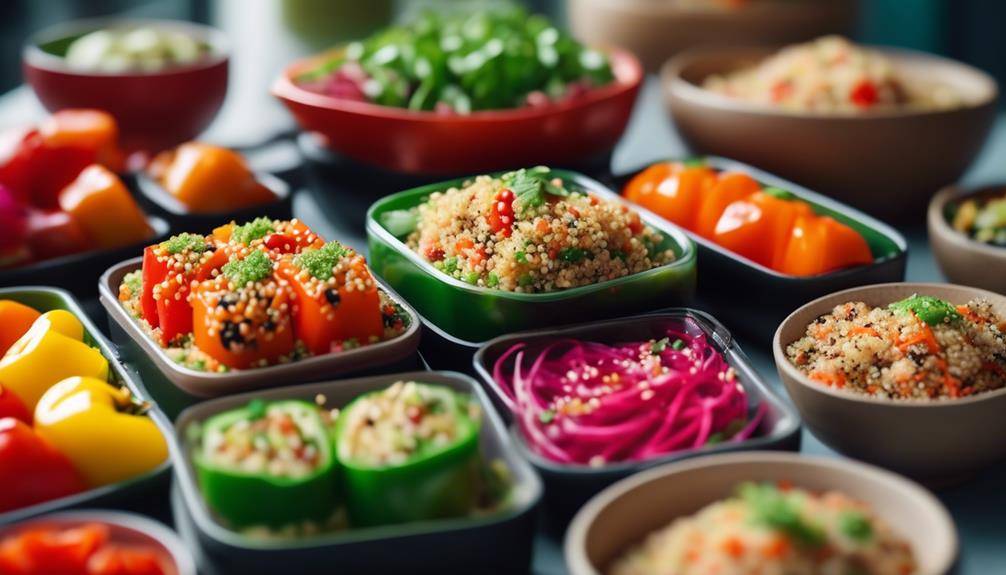How To: Meal Planning With Ketogenic Diet Principles

Meal Planning With Ketogenic Diet; Are you ready to embark on a journey of meal planning with ketogenic diet principles, like a skilled chef preparing a symphony of flavors? The ketogenic diet has gained popularity for its ability to promote weight loss, boost energy levels, and improve mental focus. But how do you navigate the world of meal planning while adhering to these principles?
In this discussion, we will explore the benefits of meal planning on keto, how to set goals, stock your pantry, choose the right fats and proteins, practice portion control, and even plan for dining out and traveling. Get ready to uncover the secrets of successful keto meal planning and take your health and wellness to new heights.
Understanding the Ketogenic Diet
To fully grasp the principles and benefits of the ketogenic diet, it is essential to understand the underlying science behind it and how it can be incorporated into your daily life. There are several misconceptions about the ketogenic diet that need to be addressed. One common misconception is that the ketogenic diet is a high-protein diet. In reality, the ketogenic diet is a high-fat, moderate-protein, and low-carbohydrate diet. By reducing your carbohydrate intake, your body enters a state called ketosis, where it starts burning fat for fuel instead of glucose. This shift in fuel source has several benefits, one of which is weight loss.
The ketogenic diet has been shown to be effective for weight loss due to several factors. Firstly, by reducing your carbohydrate intake, your body is forced to burn stored fat for energy. This can lead to significant weight loss, especially in individuals who have a higher percentage of body fat. Secondly, the ketogenic diet has been found to reduce appetite and cravings, which can help you consume fewer calories overall. Additionally, the diet promotes the production of ketones, which have been shown to have appetite-suppressing effects. Lastly, the ketogenic diet has been found to increase metabolism, meaning your body burns more calories at rest.
Incorporating the ketogenic diet into your daily life may seem daunting at first, but with proper planning and preparation, it can be manageable. Start by focusing on consuming high-quality fats, such as avocados, nuts, and olive oil, as well as moderate amounts of protein from sources like meat, fish, and eggs. Limit your intake of carbohydrates, especially refined sugars and grains. Instead, opt for non-starchy vegetables and low-carb fruits. It is important to consult with a healthcare professional or registered dietitian before starting any new diet, especially if you have any underlying health conditions. They can provide personalized guidance and support to help you successfully navigate the ketogenic diet and achieve your weight loss goals.
Benefits of Meal Planning on Keto
Meal planning on the ketogenic diet offers numerous benefits that can help you achieve your health and weight loss goals more effectively. By planning and preparing your meals in advance, you can ensure that you are consuming the right balance of macronutrients, controlling your calorie intake, and staying on track with your keto diet.
One of the key benefits of meal planning on keto is that it helps you maintain a state of ketosis. By carefully selecting your ingredients and portion sizes, you can ensure that your meals are low in carbohydrates and high in healthy fats. This will help your body stay in ketosis, a metabolic state where it uses fat for fuel instead of carbohydrates.
Meal planning also helps you save time and money. When you plan your meals in advance, you can make a shopping list and buy only the ingredients you need. This not only prevents food waste but also saves you from impulse purchases and unnecessary trips to the grocery store. Additionally, by cooking in bulk and portioning your meals, you can save time throughout the week by simply reheating your prepared meals.
Successful keto meal planning requires some tips and strategies. First, it is important to have a clear understanding of the macronutrient composition of keto-friendly foods. This will help you create well-balanced meals that meet your dietary needs. Second, try to incorporate a variety of proteins, vegetables, and healthy fats into your meals to ensure that you are getting a wide range of nutrients. Lastly, consider using tools such as meal planning apps or templates to help you stay organized and stay on track with your keto diet.
Setting Your Keto Meal Planning Goals
When setting your keto meal planning goals, it is important to establish specific and measurable objectives that align with your desired health and weight loss outcomes. Setting goals provides you with a clear direction and purpose, helping you stay motivated and focused on your journey towards optimal health and weight management.
To begin, identify what you want to achieve through your ketogenic diet. Is it weight loss, improved energy levels, better mental clarity, or overall health improvement? Once you have determined your primary objective, break it down into smaller, achievable goals. For example, if your main goal is to lose 20 pounds, you could set a goal of losing 2 pounds per week.
Next, it is crucial to track your progress regularly. This allows you to evaluate your efforts and make any necessary adjustments to ensure you are on the right track. There are various methods you can use to track your progress, such as weighing yourself weekly, taking body measurements, or monitoring your ketone levels using urine or blood tests. By tracking your progress, you can celebrate your successes and identify areas for improvement.
When setting your keto meal planning goals, it is essential to be realistic and flexible. Remember that everyone’s body is unique, and progress may vary. Be patient with yourself and focus on making sustainable changes to your eating habits. Additionally, consider consulting with a healthcare professional or a registered dietitian who specializes in ketogenic diets. They can provide personalized guidance and support to help you reach your goals.
Stocking Your Keto-Friendly Pantry
To successfully follow a ketogenic diet, it is important to stock your pantry with essential keto-friendly items. These include healthy fats and oils like coconut oil, olive oil, and avocado oil, which can be used for cooking and dressing. Additionally, low-carb baking ingredients such as almond flour, coconut flour, and sweeteners like erythritol and stevia are essential for making keto-friendly desserts and treats. By having these items on hand, you’ll be well-prepared to create delicious and satisfying meals while staying on track with your ketogenic diet.
Essential Keto Pantry Items
Ensure your keto-friendly pantry is well-stocked with essential items for successful meal planning. When following a ketogenic diet, it’s important to have a variety of keto-friendly snacks on hand to satisfy cravings and keep you on track. Some great options include nuts, seeds, beef jerky, and low-carb protein bars. These snacks are high in healthy fats and low in carbohydrates, making them a perfect choice for a keto diet.
In addition to snacks, there are a few essential cooking tools that you’ll want to have in your keto pantry. A high-quality blender is essential for making smoothies and keto-friendly sauces. A food processor is great for making homemade nut butters and keto-friendly dips. A spiralizer is a handy tool for turning vegetables like zucchini into low-carb pasta alternatives.
Healthy Fats and Oils
Having a well-stocked keto-friendly pantry means ensuring you have a variety of healthy fats and oils on hand for successful meal planning. When following a ketogenic diet, it is important to focus on consuming healthy fats, as they are a primary source of energy. Incorporating these fats into your meals can help keep you feeling full and satisfied. Some examples of healthy fats include avocados, nuts and seeds, coconut oil, and olive oil. These fats are not only delicious but also provide essential nutrients and antioxidants.
When it comes to cooking oils, it is recommended to use oils with a high smoke point, such as avocado oil or coconut oil, which are more stable at high temperatures. These oils are suitable for frying or sautéing, while olive oil is best used for low-heat cooking or as a dressing. By stocking your pantry with a variety of healthy fats and cooking oils, you can easily incorporate them into your keto-friendly meals and enjoy their numerous health benefits.
Low-Carb Baking Ingredients
Now let’s explore the realm of low-carb baking ingredients to further enhance your keto-friendly pantry. When it comes to sweetening your baked goods, there are several keto-friendly sweeteners you can rely on. Stevia, erythritol, and monk fruit extract are all popular options that provide sweetness without the added carbs. These sweeteners have minimal impact on blood sugar levels, making them perfect for those following a ketogenic diet.
In addition to sweeteners, alternative flours are essential for low-carb baking. Almond flour and coconut flour are two common choices that are low in carbs and high in healthy fats. Almond flour is made from finely ground almonds and provides a moist texture to baked goods. Coconut flour, on the other hand, absorbs more liquid and gives a light and fluffy result. These alternative flours can be used to make a variety of keto-friendly treats such as bread, muffins, and cookies.
Choosing the Right Fats and Proteins
To make informed choices about the fats and proteins you consume on a ketogenic diet, it is important to consider their quality and impact on your overall health and weight loss goals. The right types of fats and proteins can provide essential nutrients, support satiety, and contribute to your body’s fat-burning capabilities. Here are some key factors to consider when choosing your fats and proteins:
- Quality matters: Opt for high-quality sources of fats and proteins. Choose grass-fed meats, wild-caught fish, and pasture-raised eggs, as they tend to be higher in beneficial omega-3 fatty acids and have a better nutrient profile compared to conventionally raised options.
- Balanced macros: Aim for a balance between fats and proteins in your meals. While fats are the primary source of energy on a ketogenic diet, proteins play a crucial role in maintaining muscle mass and supporting various bodily functions. Include a variety of lean meats, poultry, fatty fish, and plant-based protein sources like tofu and tempeh to ensure you’re getting a well-rounded macronutrient profile.
- Mindful cooking methods: Pay attention to how you prepare your fats and proteins. Avoid deep-frying or heavily processing your foods, as this can introduce harmful trans fats and decrease the nutritional value. Opt for grilling, baking, sautéing, or steaming to retain the nutrients and natural flavors of your ingredients.
Incorporating Low-Carb Vegetables and Fruits
When it comes to incorporating low-carb vegetables and fruits into your ketogenic diet, it’s important to focus on nutrient-rich options that support your overall health. Choose a variety of vegetables such as leafy greens, cruciferous vegetables, and low-carb root vegetables to provide essential vitamins, minerals, and fiber. Additionally, opt for low-sugar fruits like berries and avocados that can add flavor and antioxidants to your meals without significantly impacting your carbohydrate intake.
Nutrient-Rich Low-Carb Options
Incorporating nutrient-rich, low-carb vegetables and fruits into your ketogenic meal planning can provide essential vitamins and minerals while keeping your carbohydrate intake in check. Here are some ideas for nutrient-rich low-carb options to include in your meals:
- Leafy greens: Spinach, kale, and lettuce are excellent choices as they are packed with vitamins A, C, and K, as well as minerals like calcium and iron.
- Cruciferous vegetables: Broccoli, cauliflower, and Brussels sprouts are not only low in carbs but also rich in fiber, antioxidants, and phytochemicals, which have been shown to have numerous health benefits.
- Berries: While fruits are generally higher in carbs, berries like strawberries, blueberries, and raspberries are lower in sugar and can be enjoyed in moderation. They are also high in antioxidants and fiber.
Variety of Vegetable Choices
Including a variety of low-carb vegetables and fruits in your ketogenic meal planning is essential for ensuring a well-rounded and nutrient-rich diet. The key to a successful ketogenic diet is finding creative ways to incorporate vegetables into your meals while keeping the carb count low. When it comes to vegetables, there are plenty of options to choose from. Leafy greens like spinach, kale, and lettuce are excellent choices as they are low in carbs and high in essential vitamins and minerals.
Other low-carb options include broccoli, cauliflower, zucchini, and bell peppers. These vegetables can be grilled, roasted, or stir-fried to add flavor and texture to your meals. You can also experiment with using spiralized vegetables as a substitute for pasta, such as zucchini noodles or spaghetti squash. Adding a variety of vegetables to your ketogenic meal plan not only enhances the nutritional value but also keeps your meals interesting and enjoyable.
Low-Sugar Fruit Alternatives
To incorporate low-carb vegetables and fruits into your ketogenic meal plan, consider adding low-sugar fruit alternatives that provide both flavor and nutritional benefits. These alternatives can satisfy your sweet tooth without spiking your blood sugar levels. Here are three options to consider:
- Berries: Berries such as strawberries, raspberries, and blackberries are low in carbs and high in fiber, making them a great choice for a low-sugar fruit substitution. They are also packed with antioxidants and vitamins.
- Avocado: Although technically a fruit, avocados are low in sugar and high in healthy fats. They can add creaminess to your meals and provide essential nutrients like potassium and vitamin E.
- Lemon and Lime: These citrus fruits are low in sugar and can add a burst of tangy flavor to your dishes. They are also rich in vitamin C, which supports immune function.
Planning Balanced Keto Meals and Snacks
To ensure a balanced keto diet, it is crucial to carefully plan your meals and snacks, incorporating a variety of nutrient-rich foods that align with keto guidelines. When it comes to keto friendly snacks on the go, there are several options that you can include in your meal plan. Nuts and seeds, such as almonds, walnuts, and chia seeds, are excellent choices that are high in healthy fats and low in carbs. You can also opt for cheese sticks, hard-boiled eggs, or beef jerky, which are convenient and portable options.
In addition to snacks, it is important to plan quick and easy keto meals that are both satisfying and nutritious. One idea is to make a salad with a base of leafy greens, topped with protein sources like grilled chicken or salmon, and drizzled with a high-fat dressing like olive oil or avocado oil. Another option is to prepare a stir-fry using low-carb vegetables, such as broccoli, bell peppers, and zucchini, along with a protein source like tofu or shrimp, cooked in coconut oil or ghee.
For those who prefer a heartier meal, consider making a cauliflower crust pizza topped with cheese, vegetables, and a source of protein like pepperoni or grilled chicken. Alternatively, you can prepare a keto-friendly casserole by layering ingredients like ground beef, cheese, and low-carb vegetables, then baking until bubbly and golden.
Preparing and Batch Cooking Keto Meals
When it comes to following a ketogenic diet, preparing and batch cooking your meals can be a time-saving strategy. By dedicating a few hours each week to meal prep, you can have ready-to-eat keto-friendly dishes on hand, saving you time and effort during busy weekdays. Additionally, batch cooking allows you to store these meals in the refrigerator or freezer, ensuring that you always have nutritious options available whenever hunger strikes.
Time-Saving Meal Prep
Preparing and batch cooking keto meals can be a time-saving strategy for those following a ketogenic diet. By spending a little bit of time upfront to plan and prepare your meals, you can save valuable time and energy throughout the week. Here are some quick meal ideas and meal prep tips to help you get started:
- Pre-cut and wash your vegetables ahead of time. This will make it easier to throw together a salad or stir-fry during busy weekdays.
- Cook a large batch of protein, such as chicken or ground beef, and divide it into individual portions. This way, you can easily add it to salads, soups, or omelets for a quick and protein-packed meal.
- Make a big pot of soup or stew and portion it out into single servings. This will provide you with a comforting and satisfying meal that can be reheated in minutes.
Storing Keto-Friendly Dishes
If you want to make the most out of your time-saving meal prep and ensure the longevity of your keto-friendly dishes, it’s important to know how to properly store them. Proper meal storage is crucial in maintaining the freshness and quality of your meals, allowing you to enjoy them for an extended period. When it comes to storing keto-friendly dishes, there are a few key principles to keep in mind. First, always make sure to store your meals in airtight containers to prevent exposure to air and moisture, which can lead to spoilage. Glass containers are ideal as they are non-toxic and won’t absorb any odors.
Additionally, labeling your containers with the date and contents will help you keep track of the freshness of your meals. Lastly, storing your meals in the refrigerator or freezer can significantly extend their shelf life. By following these simple storage guidelines, you can ensure that your keto-friendly dishes remain fresh and delicious for days or even weeks to come.
Maintaining Nutritional Balance
To maintain a balanced nutritional intake while following a ketogenic diet, it is essential to prepare and batch cook your keto meals in advance. Meal planning tips and creating balanced meals go hand in hand when it comes to maintaining a successful ketogenic diet. Here are three practical ways to achieve this:
- Plan your meals: Take some time each week to plan out your meals, ensuring that each one includes a good balance of protein, healthy fats, and low-carb vegetables. This will help you stay on track and avoid reaching for unhealthy alternatives.
- Batch cook: Spend a few hours on the weekend cooking large batches of keto-friendly meals that you can portion out and freeze. This way, you’ll always have a nutritious meal ready to go, even on busy days.
- Use a food tracker: Keep track of your macronutrient intake using a food tracking app. This will help you ensure that you’re getting the right balance of nutrients and staying within your desired ketogenic ratios.
Portion Control and Tracking Macros
To effectively manage your ketogenic diet, it is essential to prioritize portion control and meticulously track your macros. Portion control is crucial because even though the ketogenic diet emphasizes consuming high-fat foods, eating excessively can still hinder weight loss and ketosis. By carefully measuring your food portions, you can ensure that you are consuming the appropriate amount of calories and macronutrients to support your weight loss goals.
Tracking your macros is equally important. The ketogenic diet requires specific macronutrient ratios to induce and maintain a state of ketosis. Typically, the macronutrient breakdown for a standard ketogenic diet is around 70-75% fat, 20-25% protein, and 5-10% carbohydrates. By diligently tracking your macros, you can ensure that you are staying within these recommended ranges and optimizing your body’s ability to enter and sustain ketosis.
There are various tools available to help you track your macros effectively. Smartphone apps, such as MyFitnessPal and Carb Manager, allow you to input your daily food intake and provide detailed breakdowns of your macronutrient consumption. These apps also offer a database of nutritional information for a wide range of foods, making it easier for you to track your macros accurately.
Additionally, using a food scale can help you measure your portions accurately. By weighing your food, you can ensure that you are consuming the exact amount of each ingredient, allowing you to calculate your macros more precisely. This level of accuracy is crucial when following a ketogenic diet, as even small deviations from the recommended macronutrient ratios can impact your progress.
Meal Planning for Dining Out and Traveling
As you navigate your ketogenic diet journey, managing portion control and tracking macros is crucial for weight loss and maintaining ketosis. However, when it comes to dining out and traveling, meal planning becomes even more important to ensure that you can stick to your dietary goals.
When dining out, follow these tips to stay on track with your ketogenic diet:
- Choose protein-rich options: Opt for dishes that are centered around meat, fish, or poultry. These protein sources are low in carbs and will help you feel satisfied.
- Ask for modifications: Don’t be afraid to customize your order. Request to substitute high-carb sides like potatoes or rice with extra vegetables or a salad. You can also ask for sauces and dressings on the side to control the amount you consume.
- Be cautious of hidden carbs: Some dishes may contain hidden sources of carbohydrates, such as breading or sauces that contain added sugars. Always ask about the ingredients or check the menu description for any potential hidden carbs.
When traveling, preparation is key to staying on track with your ketogenic diet. Consider these travel-friendly keto meal options:
- Pack snacks: Bring along keto-friendly snacks such as nuts, cheese, and beef jerky to keep you satiated between meals. These snacks are portable and don’t require refrigeration.
- Research restaurants: Before your trip, research restaurants in the area that offer keto-friendly options. Look for menus with protein-based dishes and low-carb sides. This will help you make better choices when dining out.
- Prepare meals in advance: If you have access to a kitchen during your travels, consider preparing meals in advance and packing them in travel-friendly containers. This way, you can ensure that you have keto-friendly options readily available.
Smart Grocery Shopping for Keto Meal Prep
When preparing for keto meal prep, it is important to approach grocery shopping with a smart and strategic mindset to ensure you have all the necessary ingredients to create delicious and nutritious meals while staying within your desired macronutrient ratios. Here are some smart grocery shopping tips to help you meal prep on a budget.
First, make a list of the ingredients you need before heading to the grocery store. This will help you stay focused and avoid purchasing unnecessary items. Plan your meals for the week and determine the quantities of each ingredient you’ll need. This way, you’ll be able to buy in bulk, which is usually more cost-effective.
Next, take advantage of sales and discounts. Check online or browse through store flyers to find the best deals on keto-friendly foods. Look for sales on meat, poultry, fish, and low-carb vegetables. Buying in-season produce can also save you money.
Opt for frozen or canned vegetables instead of fresh ones. These options are often more affordable and still provide the necessary nutrients. Additionally, consider buying generic or store-brand products instead of name brands. They are usually just as good in quality but come at a lower price.
Another tip is to shop at discount stores or farmer’s markets. These places often offer lower prices on fresh produce and other keto-friendly foods. Don’t be afraid to ask for discounts or negotiate prices, especially if you’re buying in bulk.
Lastly, be mindful of portion sizes when buying ingredients. Buying larger packages may seem like a good deal, but if you end up wasting food, it’s not cost-effective. Consider buying smaller quantities to avoid food waste and keep your budget in check.
Tips for Long-Term Keto Meal Planning Success
When it comes to achieving long-term success with your keto meal planning, following these tips will help you stay on track and continue to enjoy the benefits of the ketogenic diet.
- Plan your meals in advance: Taking the time to plan your meals ahead of time is crucial for long-term keto success. This allows you to ensure that you have all the necessary ingredients on hand and helps you avoid making impulsive food choices that may not align with your keto goals. Consider using a meal planning app or a simple pen and paper to map out your meals for the week.
- Include a variety of low-carb foods: To keep your keto meal plan interesting and sustainable in the long run, it’s important to include a wide range of low-carb foods. This not only provides you with a diverse array of nutrients but also prevents boredom and food fatigue. Experiment with different vegetables, proteins, and healthy fats to keep your meals exciting and satisfying.
- Prep and batch cook: Preparing and batch cooking your meals in advance can save you time and make it easier to stick to your keto meal plan. Dedicate a few hours each week to cooking large batches of keto-friendly meals and store them in individual portions. This way, you’ll always have a healthy, keto-friendly option readily available when hunger strikes.
Meal Planning With Ketogenic Diet ; Frequently Asked Questions
Can I Eat Any Type of Fat on the Ketogenic Diet?
Yes, you can eat any type of fat on the ketogenic diet. However, it is important to practice portion control. Different types of fat have different nutrient profiles, so be mindful of your choices.
How Many Carbs Should I Aim for Each Day on the Ketogenic Diet?
You should aim for a low carb intake each day on the ketogenic diet. By limiting your carb sources, you can experience the benefits of a low carb diet, such as improved weight loss and better blood sugar control.
Are There Any Specific Fruits That Are Allowed on the Ketogenic Diet?
Yes, there are specific fruits that you can include in your ketogenic diet. Avocado and berries like strawberries, blackberries, and raspberries are low in carbs and high in fiber, making them great alternatives for a high-fat diet.
Is It Necessary to Count Calories on the Ketogenic Diet?
Counting calories on the ketogenic diet is not necessary. The focus is on consuming high-fat foods and restricting carbohydrates. You can choose alternative fat sources like avocados and nuts to meet your energy needs.
Can I Still Enjoy Desserts and Sweet Treats While Following the Ketogenic Diet?
Yes, you can still enjoy desserts and sweet treats while following the ketogenic diet. There are many dessert alternatives and sugar substitutes available that are low in carbs and can satisfy your sweet tooth.
Conclusion
In conclusion, meal planning is an essential tool for success on the ketogenic diet. By understanding the principles of the diet and setting specific goals, you can create a well-stocked pantry and choose the right fats and proteins for your meals. Portion control and tracking macros will ensure you stay on track, even when dining out or traveling. Smart grocery shopping and long-term planning are key for maintaining a successful ketogenic lifestyle. With these strategies in place, you can achieve your health and weight loss goals.








